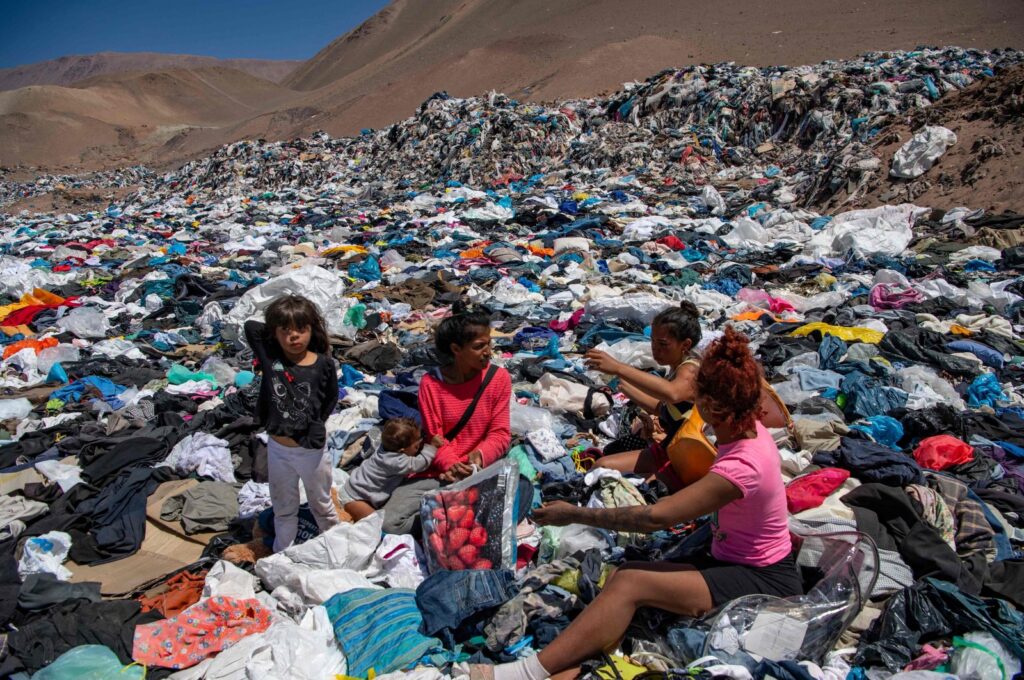Adidas Sustainability: The Good & The Bad
Adidas says building a sustainable business is “a marathon, not a sprint.” But how far along are they really in this marathon?
May 8, 2024

Adidas, the second-biggest name in activewear right after Nike, lives by a bold claim: “Impossible is Nothing.” They believe sport has the power to change lives, aiming to push human limits, bring people together through sport, and build a greener planet. But when we look at the real-world results, does Adidas sustainability actions match their ambitions?
Here at Karma Wallet, we’ve taken a close look, and the numbers are telling. With a sustainability score of just 0.5 out of 16, falling way below the sector average of 2.70, it seems there’s a big gap, especially in areas like community welfare, diversity, and inclusion.
Adidas says building a sustainable business is “a marathon, not a sprint.” But how far along are they really in this marathon?
Let’s unpack the story behind the score and see if Adidas is truly sprinting towards sustainability or just slowly jogging in place.
The Good
#1 – The Sprint Toward Climate Neutrality
While there are areas where Adidas can improve, their environmental goals demonstrate their commitment to making a significant positive impact.
Adidas has set an ambitious target to become climate neutral by 2050. By 2025, their plan is to reduce greenhouse gas emissions by 15% per product from their 2017 levels. And by 2030, they aim to reduce absolute GHG emissions across their entire value chain by 30%.
Their strategy is comprehensive, involving a full-court press to enhance environmental programs across the supply chain, forge innovative partnerships with suppliers, and invest in new materials and technologies.
A critical part of their approach is the Three-Loop Strategy, designed to sustainably transform their production:
- Recycled Loop – Currently, Adidas is focused on this first stage, which aims to replace all plastics with recycled materials in their products. The company is on track to achieve this milestone by the end of 2024, marking a significant step toward reducing their environmental footprint.
- Circular Loop – aims to create products that are fully recyclable at the end of their lifecycle, such as the prototype anorak that can be directly recycled.
- Regenerative Loop – explores the use of natural materials that can safely return to nature, minimizing environmental impact post-consumer use.

#2 – Transparency is Key
While major legislation & research usually take the cake when discussing sustainability, theirs a more important ingredient that often gets overlooked; transparency. It’s like the secret sauce in the sustainability recipe.
While Adidas is making strides in reducing their environmental impact, what really sets them apart is their commitment to being open about it all. In the 2021 Fashion Transparency Index, Adidas scored between 51-60%, showing they’re not shy about sharing info on their policies and practices. This openness isn’t just for show; it’s about building trust and making sure they walk the talk.
And they’ve gone even further, jumping into detailed environmental, social, and governance (ESG) assessments.
Turns out, they’re pretty good at it too. In 2022, Adidas snagged a solid ESG Evaluation Score of 85 in the S&P evaluation, landing them in the top ten. They’re getting props for their innovation, how they manage their supply chain, and their commitment to keeping things on the up and up. Plus, they responded to the CDP Forest assessment, showing they’re serious about tackling deforestation and protecting biodiversity.
Sure, Adidas knows they’ve got room to grow, but their commitment to transparency is a step in the right direction, setting a shining example for the rest of the industry to follow.

#3 – Making Waves: They’re Drive for Cleaner Oceans
And they have a plan when it comes to our waterways too.
Picture this: miles of pristine coastline, clear blue waters, and a future free from plastic pollution. That’s the vision Adidas and Parley for the Oceans are working tirelessly to bring to life. Since their partnership kicked off in 2015, they’ve been on a mission to turn the tide on plastic waste.
Fast forward to 2022, and their efforts are still making waves. Over 6.7 million participants worldwide joined the Run for the Oceans, pledging to clean up a staggering amount of plastic waste and committing to a cleaner, greener planet.
But it doesn’t end there. Post-event, Adidas continues its partnership with Parley, spearheading efforts to remove 250,000 kg of plastic waste from beaches, islands, and coastal communities.
And it’s more than just a clean up. Adidas has actually managed to produce more than 11 million pairs of shoes using recycled plastic from those same beaches in 2019 alone.
The Bad
#1 – The People Behind the Product
But, when we talk about sustainability at Adidas, there’s a big piece of the puzzle that just doesn’t seem to fit right, especially in the crucial “people” area. Here’s a bit of a reality check: the majority of Adidas’ shoes are made in Indonesia, where about 80% of the garment workers are women. These hardworking ladies often earn just between €82 and €200 a month—a paycheck that barely covers the basics.
Adidas does get some props for transparency, scoring pretty well in the Fashion Transparency Index 2019. They made it into the top five, showing they’re pretty open about their suppliers and what goes on in their supply chain. But here’s the kicker: having good policies on paper doesn’t always mean things are peachy for everyone involved.
What’s more, when it comes to community welfare, diversity, and inclusion, Adidas actually scored a big fat zero. It really makes you wonder—despite all the good they’re trying to do, are they missing the mark where it really matters?
#2 – The Real Cost We Ignore
While Adidas has its challenges with human rights, their approach to animal welfare also raises concerns.
While they say they’ve got options free from animal products, when you take a closer look and you’ll see a different picture. They’re still making plenty of items with leather, wool, and feathers, which means animal products are a pretty big part of what they sell. They talk a good game about animal welfare—mentioning the Five Freedoms animals should have—but it’s hard to see any solid action behind those words.
Ethical Consumer gives Adidas a thumbs down, rating them “Not Good Enough” when it comes to how they handle animal products.. They claim to get wool from sheep that haven’t been mulesed, but where’s the proof? Without real evidence, it’s just words. And while they steer clear of fur and exotic animal hair, they do use other animal-derived materials and only trace some of them back to their sources. This half-way approach shows there’s a gap between what Adidas says about caring for animals and what they actually do.

A shocking example of this is Adidas ongoing use of Kangaroo skins, despite widespread criticism and the abandonment of such practices by all major competitors. The Center for a Humane Economy found that ‘Last year, commercial shooters killed more than 1 million adult kangaroos in their native habitats in Australia. Then, add in at least 300,000 joeys — orphans unable to survive without their moms — as collateral damage.’ All this for a pair of soccer cleats, we don’t think so.
#3 – Fact or Fiction
Remember when we talked about transparency being key? Well, here’s a prime example of why it matters.
Adidas recently found itself in hot water over its Stan Smith sneakers, which were marketed as “50% recycled” with an enticing “End Plastic Waste” logo. However, a sharp-eyed consumer complaint in France led to some scrutiny.
The French ad watchdog, ARPP, pointed out that the “50% recycled” claim was only about the shoe’s upper part—not the whole shoe. Plus, the environmental logo seemed to promise more than the sneakers could deliver.
This incident led to Adidas being officially found guilty of greenwashing, a term used when companies exaggerate or mislead consumers about their environmental practices. It’s a stark reminder of the importance of honest environmental claims and the need for transparency in the industry.
As consumers, it’s up to us to scrutinize the sustainability messages we encounter and hold brands accountable for their advertising. So, the next time you see a flashy sustainability claim, remember to dig deeper and demand transparency.
And to the companies out there – if it’s 30% recycled instead of 50%, let’s celebrate the truth rather than wishful thinking, and keep pushing for progress together.
Adidas Sustainability: The Final Word
Adidas, you’ve shown us both sides of the coin—the good and the bad. From your ambitious environmental goals to your strides in transparency, you’ve set a benchmark for sustainability in the industry.
But let’s not ignore the cracks in the pavement. Issues like human rights violations and greenwashing tarnish the shine of your sustainability efforts.
However, we’re not here to tear you down but to lift you up. Your commitment to transparency has gone a long way for us. It’s a beacon of hope in a sea of corporate ambiguity. So, while setbacks happen, we’re rooting for you. We appreciate the steps you’re taking, but let’s remember: honesty is the best policy.
Let’s celebrate the truth, acknowledge the journey ahead, and keep pushing for progress together. As consumers, let’s hold brands accountable for their actions and demand transparency every step of the way. Because in the marathon towards sustainability, every stride matters.
So, can we trust Adidas? Where do you stand with them—do you believe they’re genuinely committed to sustainability, or are they falling short of their promises?
With a sustainability score of just 0.5 out of 16, falling way below the sector average of 2.70, it’s evident there’s a significant gap, particularly in areas like community welfare, diversity, and inclusion. Dive deeper into Adidas’ sustainability performance with our Karma Wallet Company Report Card below!

Looking for Sustainable Alternatives? Here are Some of Our Fav’s
CARIUMA
Sneakers with Soul: Learn how CARIUMA is revolutionizing the sneaker industry with sustainable materials, reforestation projects, and ethical practices. Plus, earn exclusive cashback rewards with CARIUMA on the Karma Wallet Card!
SAOLA
Step Lightly, Leave No Trace: Meet SAOLA, the Footwear Brand with a Heart for the Planet Discover how SAOLA Shoes is revolutionizing sustainable fashion with innovative materials and a commitment to wildlife conservation. Plus, earn exclusive cashback rewards with SAOLA on the Karma Wallet Card!
Nisolo
Step into sustainable fashion with Nisolo! From timeless designs to everyday functionality, Nisolo offers shoes and accessories that not only look good but also do good for the planet. With their commitment to 100% living wages and 0% net carbon emissions, every purchase supports positive social impact and environmental sustainability.

















